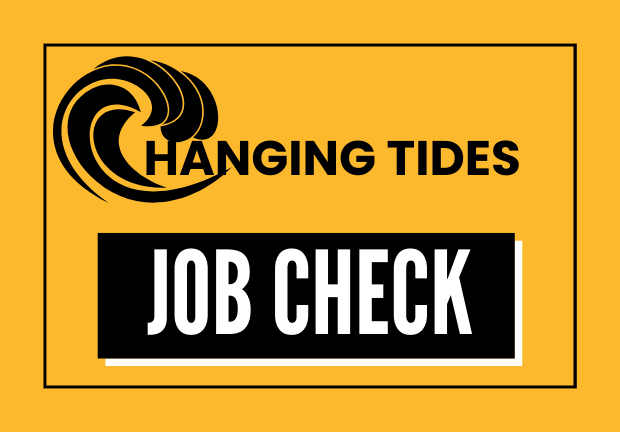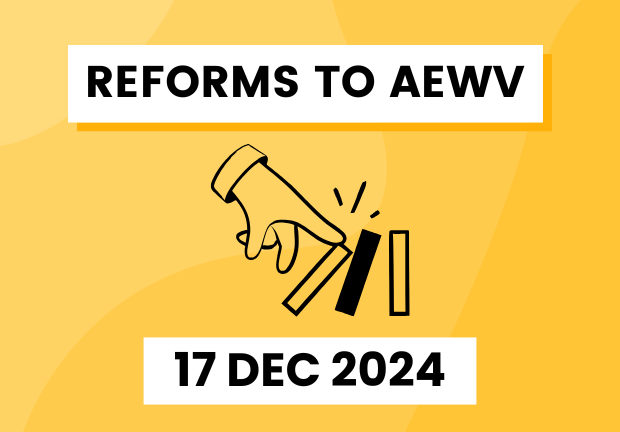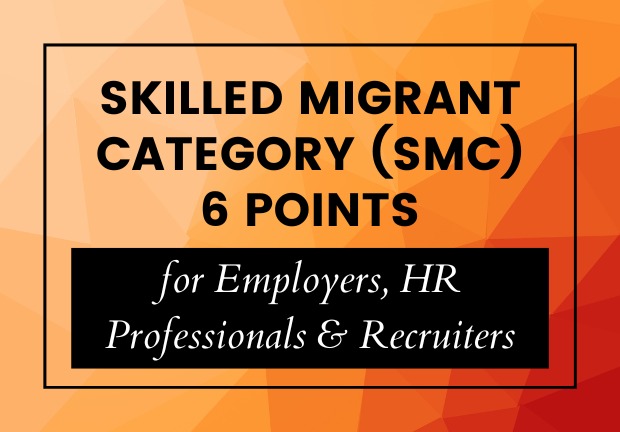Market Rate? Median Wage? Multiple Medians?! Making Sense of INZ’s Wage Rules
29 April 2025Navigating New Zealand’s immigration system can feel like entering a labyrinth—especially when trying to make sense of the “median wage” versus the “market rate,” and more importantly, figuring out which applies where.
The confusion is real. In some visa categories, the market rate is the deciding factor. In others, it’s the median wage. And just to complicate things further, different categories use different median wage figures—for example, the threshold for a twice-median-wage job check may differ from that of the Skilled Migrant Category or the Parent Residence category.
These aren’t just bureaucratic terms. Misunderstanding them could result in costly delays, non-compliance, or outright visa refusals. For employers juggling workforce planning and immigration obligations, understanding these distinctions is not optional—it’s essential. And for your employees, not being across this from the start can lead to expensive and emotionally draining consequences.
Here’s a breakdown to help you - and to share with your colleagues as well as migrant team members - so you’re all on the same page.
What is the Median Wage?
Let’s begin with the basics: the Median Wage is the mid point in New Zealand’s wage distribution. That means half the workforce earns less than this amount, and half earns more. It’s calculated by Stats NZ, and Immigration New Zealand (INZ) use it as a reference point to set as threshold for various work and residence visas.
Sounds simple enough, right?
Except, in true immigration fashion, it’s not that straightforward.
While Stats NZ updated the national median wage to $33.56/hour in February 2025, INZ isn’t applying that figure across the board just yet. Instead, several key visa categories are still referencing the older $31.61/hour rate from February 2024. And even within the same type of visa (like the Accredited Employer Work Visa), different stages (like job checks vs. visa applications) might use different median thresholds depending on when they were lodged.
Here are some visa pathways still operating under the $31.61/hour benchmark:
- Skilled Migrant Category (SMC)
- Green List pathways – both Straight to Residence and Work to Residence
- Transport Sector Work to Residence
Why does this matter? Because the median wage threshold can make or break a visa application. If you’re an employer offering slightly under the required wage—or a migrant thinking you’ve hit the mark based on the wrong rate—you could be setting yourself up for a rejection.
So next time you hear someone say, “It’s just based on the median wage,” ask them: “Which one?”
Introducing the Market Rate (from 10 March 2025)
As of 10 March 2025, INZ now uses the "market rate" — not the median wage — as the primary wage benchmark for Accredited Employer Work Visa (AEWV) applications.
What does this mean for employers? It’s no longer just about ticking off a government-set figure. You now need to prove that the salary you’re offering reflects real-world conditions for that role. That includes:
📌 Industry standards
📌 Geographic location
📌 Role-specific skills, experience, and qualifications
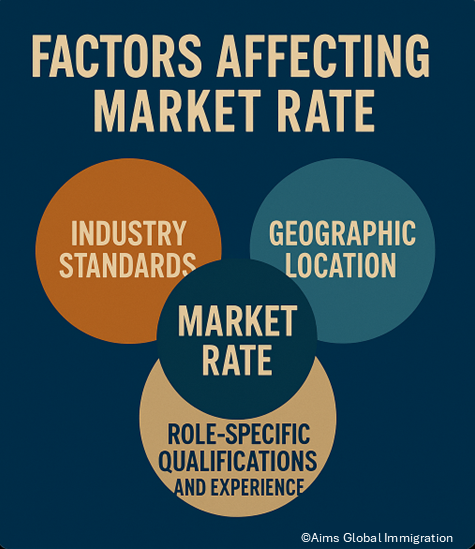
Determining the Market Rate
To show INZ that your offer stacks up, you’ll need credible, evidence-backed data. This includes:
- Job listings and salary guides
- Industry-specific surveys or wage reports
- Regional salary data or recent recruitment campaigns
- Examples from similar roles in your business or competitors
Remember, this isn't about guessing or going with what’s always been done — INZ expects employers to justify wages with robust, up-to-date evidence that reflects local labour market conditions.
At Aims Global, we help businesses get this right — especially as part of the Job Check process. If you need a second opinion or a sanity check, we’re only a call away. Contact us today
Why It Matters for Residence Pathways
Here’s where it gets a bit tricky.
While AEWV applications are now based on the market rate, many residence visa categories still rely on the median wage as their threshold — including the Skilled Migrant Category and the Green List pathways.
That means: A job offer that works for a temporary visa might not qualify for residence.
So, if you’re offering a lower market-aligned wage now, you could be accidentally closing doors for your migrant staff down the line. It’s a classic case of short-term win vs. long-term risk.
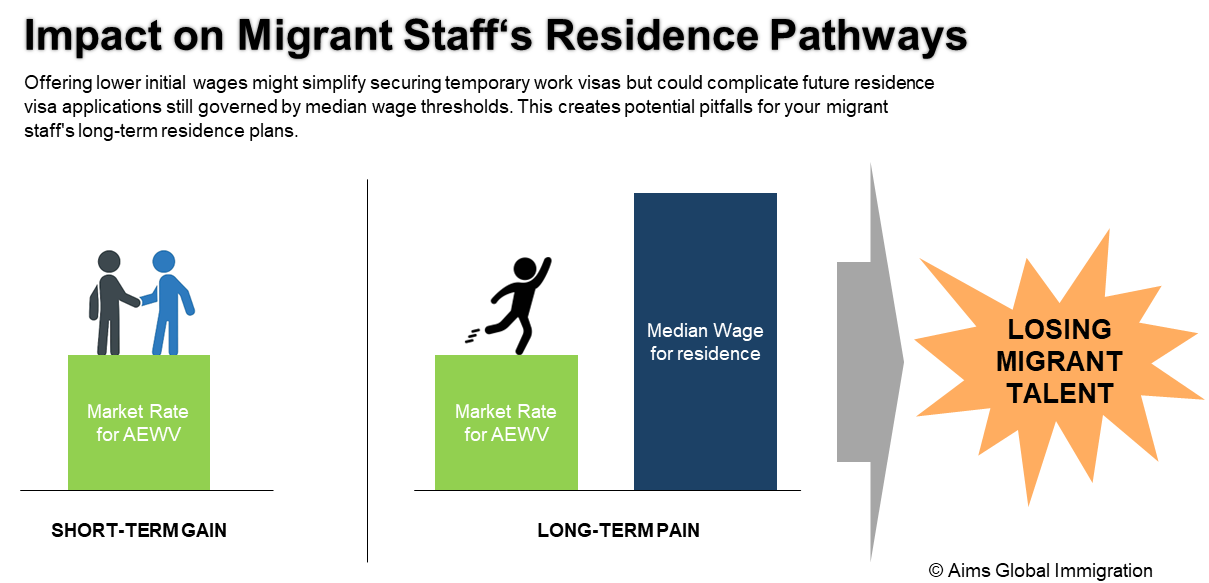
Strategic Advice for Employers
Here’s how you can navigate this shift with confidence:
- Regularly review wage levels — use reliable sources and update them often.
- Keep detailed documentation — including how you arrived at the offered rate.
- Seek expert advice — immigration policies are shifting fast, and generic info won't cut it.
Being proactive isn’t just good compliance — it’s good business.
When you protect your migrant workforce’s pathway to residence, you retain talent longer and build loyalty that money can’t buy.
Want to remain up-to-date with immigration policies and their impact?
To simplify the latest immigration updates, trends and compliance essentials, we hold regular webinars for employers, HR professionals and recruiters. You also get the opportunity to have questions answered live, learn from real-world case studies, and connect with other employers navigating the same challenges.
Check out our upcoming events and register today!

Need Help? Let’s Talk
Whether you’re an HR manager, business owner, or just trying to do the right thing by your team, we’re here to help.
At Aims Global, our experts work closely with employers to manage immigration compliance and workforce planning — without the overwhelm. Contact us today for bespoke advice, a workforce compliance check, or just a clear-headed conversation about what all this means for your business.

